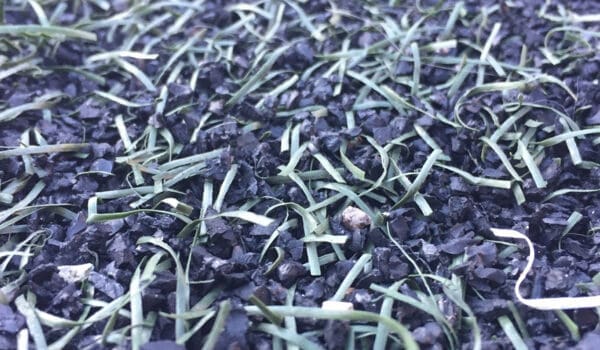Crumb rubber granulate (CRG) produced from used car tires, also called end of life tires (ELTs), is commonly applied to artificial turf pitches, including football fields, playgrounds and walkways in Norway. In addition to the rubber itself, tires also containa cocktail of chemicals as fillers, stabilizers, pigments, oils, resins and a range of other organic compounds and heavy metal additives that can leache to the environment.
A new study found that CRG contains a large mix of organic chemicals (PAHs, phthalates, benzothiazoles, bisphenols and heavy metals). The rubber crumbs do readily leache this cocktail of organic additives and metals into seawater. This included high concentrations of benzothiazole and zinc, as well as detectable levels of PAHs and phenolic compounds.
“Previous studies have mainly investigated CRG leaching behavior in soil and freshwater”, co-project-leader Dr. Dorte Herzke explains in a recent scientific publication.
“However, a lot of this rubber enters coastal marine environments in Norway, both from tire wear on roads, the effluent from washing machines cleaning the clothing of the players and in snow removed from artificial turfs. Today we know that rubber from car tires are one of the largest contributors to microplastic pollution in the oceans. We therefore wanted to investigate if CRG can contaminate seawater and if it is toxic to marine organisms”.
In a comprehensive laboratory study, Herzke and co-workers investigated the chemical cocktail in the rubber crumbs and the ocean water leachate.
“We were surprised over the large number of chemicals present in these rubber particles used for so many purposes for indoor- and outdoor sport- and playgrounds”, Herzke says.
“To understand the impact on marine organisms, we exposed small planktonic crustaceans (copepods) to a wide range of rubber leachate concentrations diluted in seawater. The leachate was toxic at high concentrations, shown through high mortality of the copepods within a few days. Very low concentrations, in contrast, did not lead to mortality and seemed to be tolerated by the organisms, at least in the short term. The problem is that we currently do not know what concentrations of CRG and tire wear particles in general are present along the Norwegian coast. But we know, that these particles are behaving similar as other microplastic particles in the environment, and will be around for many many years, slowly braking up into smaller particles.”
